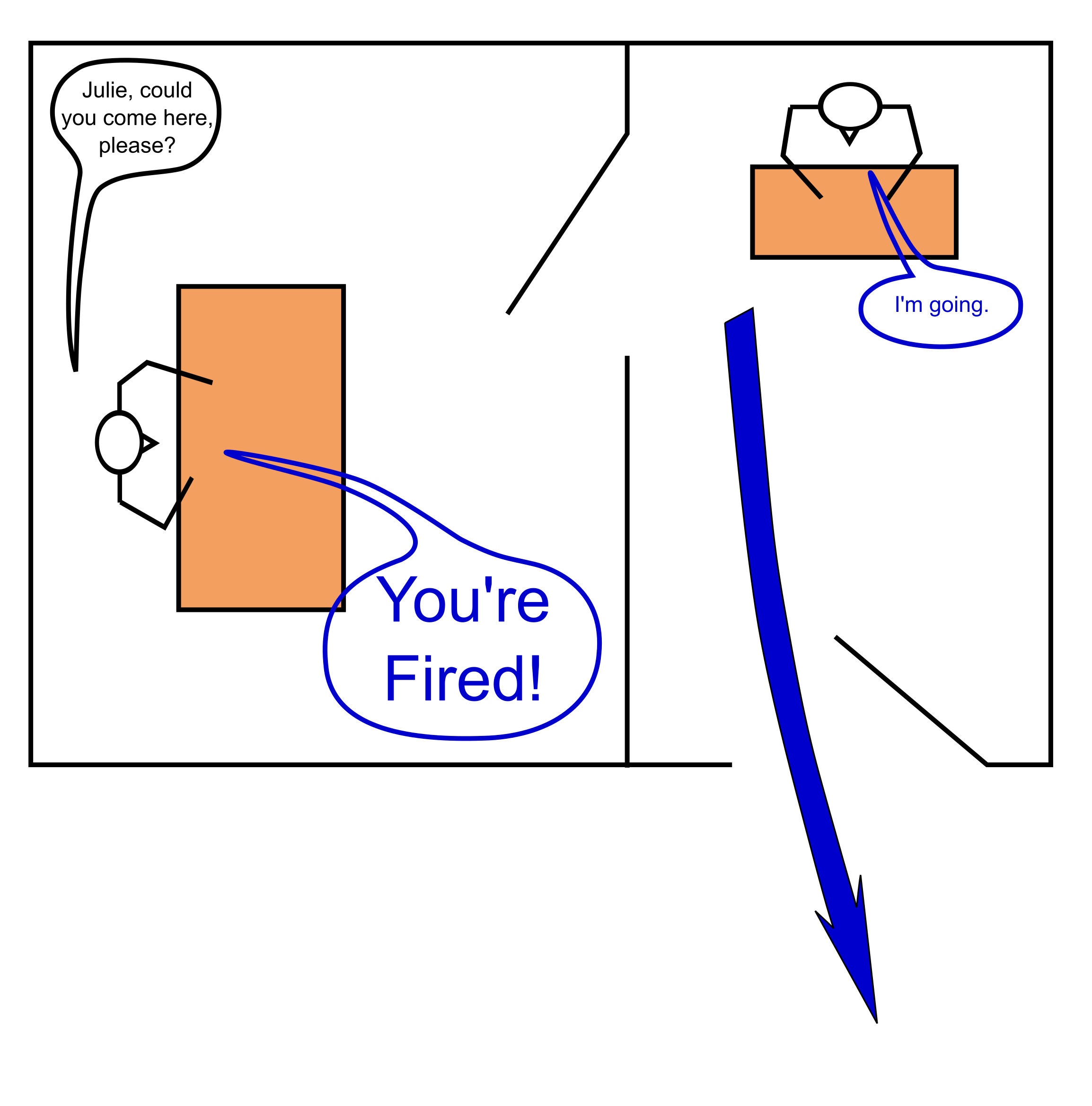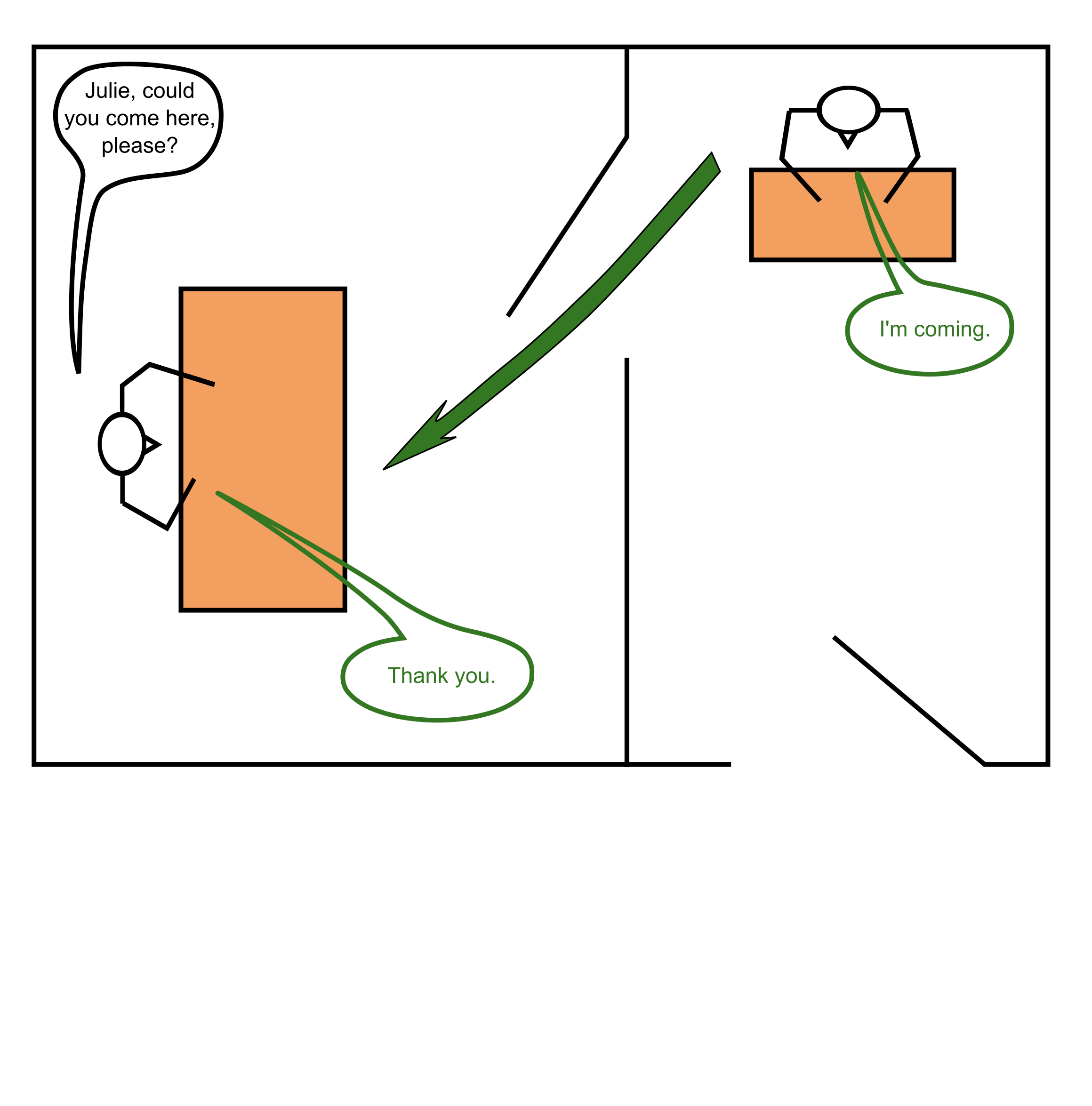The correct use of the verbs come and go causes problems for speakers of Portuguese. Depending on the context, come and go indicate a direction opposite to the corresponding words in Portuguese. There is a partial, context dependent inversion, of the direction indicated by come and go. Incorrect use and possible resulting problem is shown in Figure 1. Correct use is shown in Figure 2. The arrows indicate where Julie's boss thinks she is going because of her answer.


This context dependent inversion of come and go is probably result of the fact that Portuguese has a preposition indicating “there where you, the listener, are”, while English doesn't have a preposition with this meaning. When responding to a request to come, one communicates “there where you are” by placing oneself in the position of the person who made the request. As a result, in these cases, the direction indicated by come and go are inverted in comparison to their Portuguese equivalents.
Answering I'm going means “I'm moving to a place where neither of us is“ (See Figure 1). Answering I'm coming means “I'm moving to the place where you, who made the request, are“ (Figure 2).
Not applying this context dependent inversion correctly in English can cause that a person who makes a request thinks the request is refused. This can lead to unpleasant situations, like in Figure 1 or the less drastic but still unpleasantly confusing example below.
| Peter: | Hi, Sue. We are at The Jolly Wizard to celebrate Daniel's birthday. Do you want to come? |
| Sue: | Oh, that's nice. I'm going. |
| Peter: | What do you mean? You say it's nice and then you say you're going? Why? |
| Sue: | Oh? ... Well ... I really like that idea of you guys, to celebrate Daniel's birthday at The Jolly Wizard ... I'm going. |
| Peter: | Ah! ... I don't understand you. You say you think it's a good idea, that it's nice, as if you would want to come ... and then you say you are going. It makes me wonder ... why you aren't coming ... and where is it that you going |
Peter is confused because Sue does not use the context dependent inversion. She does not say I'm coming. Peter understands she will not move to where he and the others are. She is not placing herself in Peter's position. By saying I'm going, Sue communicates she is moving to another place than the place where Peter and the others are. That is why Peter is confused and disappointed.
With the following response. Sue would have avoided the problem, Peter would have understood right away.
| Sue: | Oh, that's nice. I'm coming. |
| Peter: | Good. See you in a bit. |
The idea of placing oneself in the position of the other also helps to find out which word to use when referring to a place where none of the speakers is at the time of requesting or suggesting. This can happen for instance when making an appointment and deciding where to meet.
The following ways of making suggestions are all possible but they have different connotations.
The problem of mixing up come and go, can be avoided by using alternatives like the following.
They are common expressions for situations like this.
The same context dependent inversion happens with bring, which means come and have something or somebody with oneself and take, which means go and have something or somebody with oneself.
| Hi Susan. The fountain pen you've lost is with me. I found it just after you left. Tomorrow, when I come to work on the project, I'll bring it with me. | |
| (A) | Can I use your computer this afternoon. |
| (B) | I'm sorry but that won't be possible. I have to take it with me and drop it off for maintenance when I go to work. |
In cases when it is necessary to go somewhere in order to come back with someone or something, the verb get is used.
| (A) | All day I have been working on this report and only now I see I ran out of staples. I only have time to finish improving this section or to buy staples before taking it to my client. Not both. |
| (B) | Don't worry. I can go to the stationer and get you some staples so you can work on improving that section. |